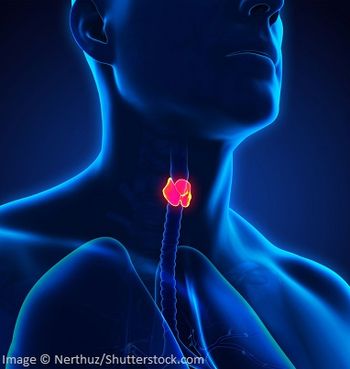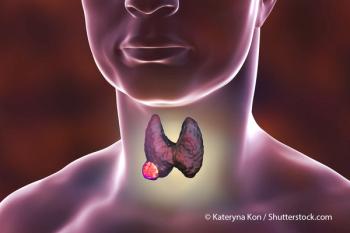
Subclinical Lesions Account for Rise in Thyroid Cancer Diagnoses
A population-based study in Minnesota showed that a recent rapid rise in the incidence of thyroid cancer is attributable to the increased diagnosis of clinically occult, subclinical lesions.
A population-based study in Minnesota showed that a recent rapid rise in the incidence of thyroid cancer is attributable to the increased diagnosis of clinically occult, subclinical lesions.
In 1975, the incidence of thyroid cancer according to SEER data was 4.9 per 100,000 individuals. This rose to 14.3 per 100,000 in 2009. “Currently, thyroid cancer has the most rapid increase in incidence of any cancer, such that it has been estimated that by 2019 thyroid cancer will become the third most common cancer in women,” wrote study authors led by Juan Brito, MD, of the Mayo Clinic in Rochester, Minnesota.
In the new study, researchers used the Rochester Epidemiology Project database to examine reasons for this rise in thyroid cancer cases. Results were
Similar to the national trend, the age-adjusted incidence for thyroid cancer increased from 7.1 per 100,000 person-years in the 1990–1999 period to 13.7 per 100,000 person-years in the 2000–2012 period. There has been no change in disease-specific mortality since 1935.
The incidence of clinically recognized thyroid cancer was 5.5 per 100,000 person-years in the period from 1960–1969, a rate very similar to that seen from 2000–2012. Meanwhile, the incidence of clinically occult thyroid cancer was only 1.9 per 100,000 person-years in 1990–1999 and 7.4 per 100,000 person-years from 2000–2012. The average size of each of these types of tumors remained unchanged over time.
“Our findings show that during the study period, 1935–2012, 23% of cases were clinically occult and 77% were clinically recognized,” Brito said in an email. “From 2000–2012, however, the number of clinically occult cancers represented more than half of the cases.”
Brito said that the majority of the new cases are small and most were papillary cancers; such patients tend to have excellent prognosis, and he said active monitoring without surgery is now recommended for many. He did note that other studies in different populations should be done to confirm these findings, but the fact that the Minnesota study’s trend mirrored the national trend suggests the findings may hold true nationally.
“We found that, contrary to what we expected, many of these cases are not only found incidentally but clinicians are actively looking for them in patients without any evidence or symptoms attributed to thyroid cancer,” Brito said. “Clinicians taking care of patients should know that there is no benefit in looking for thyroid cancer lesions in asymptomatic patients. In fact, the excessive diagnosis of small papillary thyroid cancer could lead to psychological and financial harm.”
Newsletter
Stay up to date on recent advances in the multidisciplinary approach to cancer.

















































































